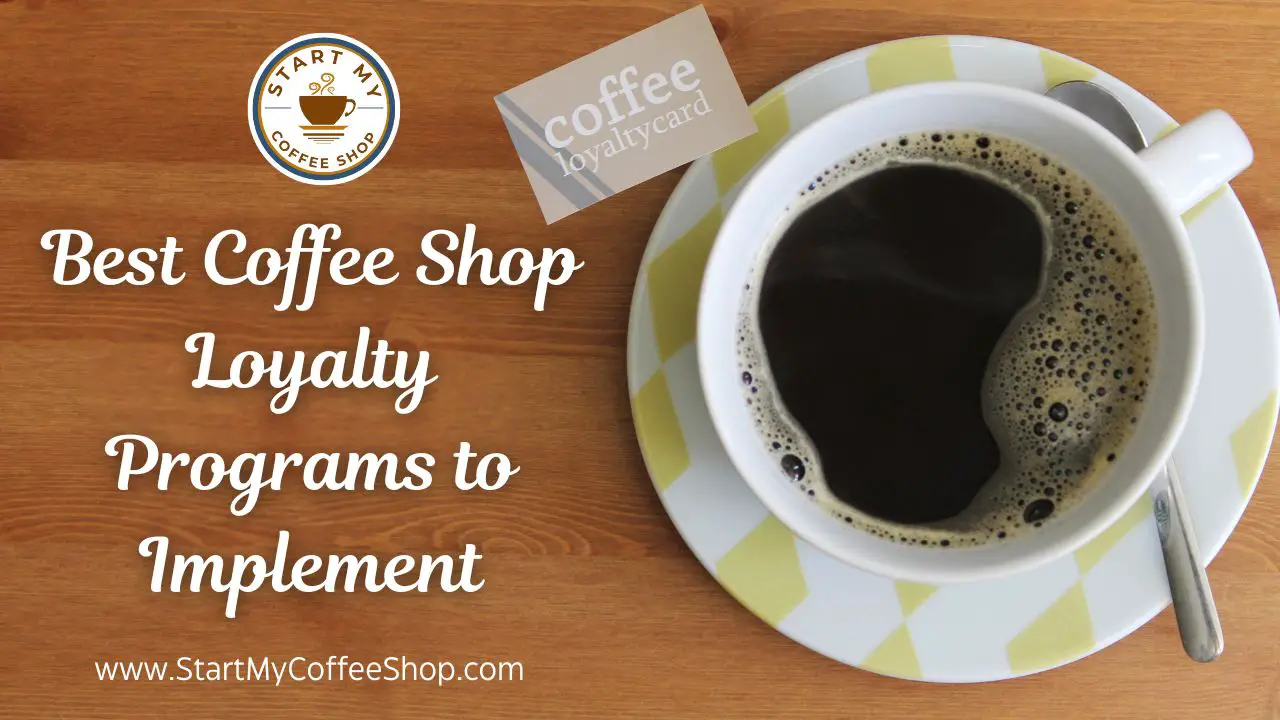In the ever-evolving world of the coffee industry, pricing strategies play a pivotal role in the growth of a coffee shop business. Determining the right pricing model is essential for generating revenue, maintaining profitability, and capturing the attention of discerning coffee enthusiasts.
Pricing in a coffee shop business plan is crucial for profitability and customer satisfaction. Consider cost factors, market analysis, and pricing strategies like cost-plus, value-based, competitive, bundle, and dynamic pricing.
This article explores the various factors to consider when establishing prices for your coffee shop, the different pricing strategies available, and how to strike the perfect balance between profitability and customer satisfaction.
Understanding Cost Factors

Before implementing pricing strategies, it is essential to have a comprehensive understanding of the cost factors involved in operating a coffee shop. These costs encompass various aspects, including rent, utilities, employee wages, and raw materials such as coffee beans, milk, and sweeteners.
Additionally, expenses related to equipment maintenance, marketing efforts, licenses, and insurance contribute to the overall cost structure.
By thoroughly grasping the costs associated with each cup of coffee, you can make informed decisions when establishing a pricing structure. This understanding enables you to strike a balance between profitability and competitiveness in the market.
By accurately assessing the expenses involved in producing and serving a cup of coffee, you can ensure that your price covers these costs while remaining appealing to customers.
Consideration of the cost factors also allows you to identify areas where cost optimization can be achieved without compromising the quality of your offerings. It may involve seeking cost-effective suppliers, streamlining operations, or exploring energy-efficient solutions.
By effectively managing your costs, you can maintain a competitive edge in the coffee shop industry while maximizing profitability through appropriate pricing strategies.
Read more about: Open a Coffee Shop Cost: Budgeting the Bean
Market Analysis
Start by examining the demographics of your target market. Consider factors such as age, gender, income levels, and lifestyle preferences. Understanding the characteristics of your potential customers will help you gauge their purchasing power and willingness to pay for your coffee offerings.
Next, analyze the local competition. Study other coffee shops in your area and assess their pricing practices. Examine the range of prices they offer, the value they provide, and any unique selling points they have. This analysis will allow you to position your pricing competitively and differentiate your offerings from the competition.
Furthermore, delve into customer preferences and coffee consumption trends. Identify the types of coffee beverages that are popular among your target market. Consider whether customers in your area value specialty or artisanal coffee or if they prioritize convenience and affordability. Understanding these preferences will guide you in pricing specific products or introducing new offerings to cater to customer demands.
By conducting a comprehensive market analysis, you can set prices that align with market expectations. This knowledge empowers you to determine the perceived value of your products and establish prices that strike the right balance between profitability and customer satisfaction. Additionally, market analysis helps you identify opportunities for innovation and areas where you can differentiate your coffee shop from competitors, whether through unique product offerings, superior quality, or exceptional customer service.
Pricing Strategies
Pricing is a critical aspect of any coffee shop business plan, and choosing the right pricing strategies can significantly impact the improvement and profitability of your venture.
Cost-Plus Pricing
Cost-plus pricing is a straightforward and transparent strategy widely used in the coffee industry. With this approach, you calculate the total cost of producing a cup of coffee by considering factors such as rent, utilities, employee wages, raw materials, equipment maintenance, and overhead expenses.
Once you have determined the production cost, you add a predetermined profit margin to set the base price. This strategy ensures that your prices cover expenses and contribute to profitability. The transparency of cost-plus pricing can be appealing to customers, as they can easily understand how the price is determined.
Value-Based Pricing
Value-based pricing revolves around the perceived value of your coffee offerings. It involves considering the unique attributes of your coffee shop that differentiate it from the competition. Factors such as the quality of the beans, the brewing techniques used, the ambiance of your shop, and the overall customer experience play a significant role in determining the value customers associate with your products.
With value-based pricing, you align your prices with the value your customers perceive. If your coffee shop offers exceptional quality and provides a differentiated experience, you can charge premium prices. This strategy allows you to cater to customers willing to pay more for a superior product and experience.
Competitive Pricing
Competitive pricing involves analyzing the pricing practices of your direct competitors. By setting your prices in line with or slightly below those of similar coffee shops in your area, you can position yourself competitively within the market. This strategy is particularly effective when entering a saturated market or when targeting price-sensitive customers.
However, it is crucial to differentiate your offerings through other factors, such as superior quality, unique ambiance, or exceptional customer service. By combining competitive pricing with additional value propositions, you can avoid becoming a commodity and attract customers based on factors beyond price alone.
Read more about: Open a Coffee Shop Business Plan: From Startup to Caffeine Oasis
Bundle Pricing
Bundle pricing is a strategy that involves offering coffee and complementary products or services as a package deal. By bundling items such as pastries, snacks, or loyalty programs, you increase the perceived value of your offerings and incentivize customers to spend more. Bundling can be an effective way to upsell and increase the average transaction value.
For example, offering a discounted price for a coffee and pastry combo encourages customers to purchase both items together, creating a win-win situation for both your customers and your business. Additionally, bundle pricing can enhance customer loyalty by providing added value and convenience.
Dynamic Pricing
Dynamic pricing is a flexible approach that allows you to adjust prices based on demand, time of day, or other relevant factors. With dynamic pricing, you can adapt your prices to optimize revenue generation in different situations.
For example, during off-peak hours, you can offer lower prices to attract customers who may be more price-sensitive at that time. On the other hand, during peak hours or high-demand periods, you can increase prices slightly to take advantage of the increased willingness of customers to pay more.
Dynamic pricing requires continuous monitoring of market trends and customer behavior to make timely adjustments and maximize revenue opportunities.
Balancing Profitability and Customer Satisfaction:

In the coffee shop industry, achieving a harmonious blend of profitability and customer satisfaction is essential. While maximizing profitability is a crucial goal for any business, it should never come at the expense of compromising the customer experience.
To strike the right balance between pricing and customer satisfaction, consider the following strategies:
Value Perception
Continuously assess how customers perceive the value of your coffee offerings. Conduct regular customer surveys and gather feedback to understand their preferences, expectations, and willingness to pay.
By actively listening to your customers, you can identify areas for improvement and make adjustments to your pricing and product offerings accordingly. For example, if customers perceive your prices as too high, consider reevaluating your pricing structure or exploring ways to enhance the perceived value, such as offering unique flavors or providing exceptional customer service.
Competitive Analysis
Keep a close eye on your competitors’ pricing strategies. While remaining competitive within the market is important, engaging in a price war can ultimately erode profitability for all parties involved. Instead, focus on offering unique value propositions beyond price to attract and retain customers.
Consider what sets your coffee shop apart from competitors. It could be factors such as sourcing premium beans, using sustainable practices or offering a cozy atmosphere. By highlighting these differentiating factors, you can justify higher prices and cultivate a loyal customer base that values the overall experience your coffee shop provides.
Menu Engineering
Optimize your menu by strategically pricing items with higher profit margins. Conduct a thorough analysis of the costs involved in each menu item, including ingredients, preparation time, and associated overhead costs. Consider the popularity and demand for each item and adjust the pricing accordingly. Highlight signature beverages or specialty drinks that showcase your coffee shop’s unique offerings.
By featuring these items and pricing them appropriately, you can create a sense of exclusivity and entice customers to try something distinctive. Furthermore, regularly review your menu to ensure it aligns with current trends and customer preferences, making necessary adjustments to pricing and offerings as needed.
Read more about: Online Coffee Shop Business Plan: The Virtual Barista’s Playbook
Pricing Transparency
Transparency is crucial for building trust and fostering a positive customer experience. Display your pricing structure, including the prices of individual items, any promotions or discounts, and any additional charges such as taxes or service fees.
Avoid hidden fees or surprises at the point of sale, as this can lead to customer dissatisfaction and damage your reputation. By being transparent with your pricing, you demonstrate integrity and build trust with your customers. They will appreciate knowing exactly what they are paying for and feel confident in the value they receive.
Regular Evaluation
Continuously evaluate the effectiveness of your pricing strategies and monitor key metrics to ensure they align with your business goals. Regularly analyze sales data, profit margins, customer feedback, and market trends to make informed pricing decisions.
Pay attention to customer preferences, shifting market dynamics, and changes in costs. Consider the impact of external factors such as inflation or fluctuations in the coffee market. By staying informed and adaptable, you can make necessary adjustments to your pricing strategies to maximize profitability while maintaining customer satisfaction
Remember that pricing is not a one-time decision. It requires ongoing evaluation and adjustment to remain effective in a dynamic and competitive market. Striking the right balance between profitability and customer satisfaction in your coffee shop requires a deep understanding of your target market, careful consideration of your costs, and continuous efforts to deliver value beyond price.
Summary
In the highly competitive coffee shop industry, pricing strategies significantly impact the improvement and profitability of your business. Understanding your cost factors, conducting market analysis, and implementing appropriate pricing strategies are essential steps in creating a solid coffee shop business plan.
Frequently Asked Questions
Q: How do I determine the pricing for my coffee shop products?
A: To determine pricing, consider cost factors like rent, wages, and raw materials. Conduct market analysis, evaluate competitors’ pricing, and choose a strategy that aligns with your unique value proposition.
Q: What is cost-plus pricing, and when should I use it?
Cost-plus pricing involves calculating production costs and adding a profit margin. It is commonly used in the coffee industry to ensure profitability. Use it when you want a transparent pricing approach.
Q: What is value-based pricing, and how does it work?
Value-based pricing focuses on the perceived value of your coffee offerings. Consider factors like quality, ambiance, and customer experience. Align your pricing with the value customers associate with your products.
To learn more on how to start your own coffee shop, check out my startup documents here.
Disclaimer: The information provided by StartMyCoffeeShop.com (“The Site”) is for general informational purposes only. All information on the Site is provided in good faith. However, we make no representation or warranty of any kind, express or implied, regarding the accuracy, adequacy, validity, reliability, availability, or completeness of any information on the Site. Under no circumstance shall we have any liability to you for any loss or damage of any kind incurred as a result of the use of the Site or Reliance on any information provided on the Site. Your use of the Site and reliance on any information on the Site is solely at your own risk. This blog post is for educational purposes only and does not constitute legal advice. Please consult a legal expert to address your specific needs. Terms and Conditions. (https://startmycoffeeshop.com/terms-and-conditions/)

Hi! I’m Shawn Chun
My adventure in coffee began when I first launched my first coffee shop back in the early 2000s. I had to figure out so many things on my own and to make it worse within 2 years of opening two large corporate coffee chains moved in just blocks away from me!
As I saw smaller and even some larger coffee shops in the neighborhood slowly lose customers to these giant coffee chains and slowly close up shop, I knew that I had to start getting creative…or go out of business.
I (like you may be) knew the coffee industry well. I could make the best latte art around and the foam on my caps was the fluffiest you have ever seen. I even had the best state-of-the-art 2 group digital Nuova Simonelli machine money could buy. But I knew that these things alone would not be enough to lure customers away from the name brand established coffee shops.
Eventually, through lots of trial and error as well as perseverance and creativity I did find a way to not only survive but also thrive in the coffee/espresso industry even while those corporate coffee chains stayed put. During those years I learned to adapt and always faced new challenges. It was not always easy, however, in the end, I was the sole survivor independent coffee shop within a 10-mile radius of my location. Just two corporate coffee chains and I were left after that year. All told the corporate coffee chains took down over 15 small independent coffee shops and kiosks and I was the last one standing and thriving.
Along the years I meet others with the same passion for coffee and I quickly learned that it is not only “how good a barista is” that makes a coffee shop successful, but the business side of coffee as well.
Hence why I started this website you are on now. To provide the tools and resources for up and coming coffee shop owners to gain that vital insight and knowledge on how to start a coffee shop successfully.
Stick around, browse through my helpful blog and resources and enjoy your stay! With lots of LATTE LOVE!
Shawn






